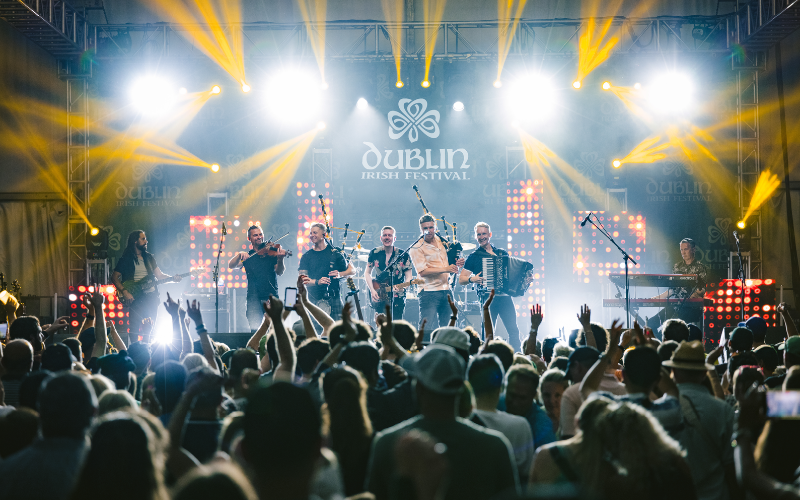As predicted, the elections here last Friday for seats in local councils and the European Parliament have been a triumph for Sinn Fein and a disaster for the Labour Party.
The really big surprise, however, was not the dramatic rise in the Sinn Fein vote or the even more dramatic collapse in the Labour vote, resulting in the resignation of the Labour leader and tanaiste (deputy prime minister) Eamon Gilmore on Monday. It was the significant recovery in the Fianna Fail vote.
First the Sinn Fein triumph. Given some of the headlines, you might think the Shinners are about to take over the country, but they're a long way from that.
With final counting still underway, they have around 15 percent of the vote in the local elections and around 20 percent of the vote in the European elections. It marks a significant improvement for them, but it's far from being a landslide – they got around 11 percent of the vote in the general election for the Dail (Parliament) in 2011.
Of the two, the local election vote is regarded by the experts as the better guide to what could happen in the next general election in 2016. (Disconnection from and dislike of Europe, intensified greatly this time by the bailout austerity program, mean that people are far more cavalier about the way they vote for European seats.) So it's more instructive to look at the local election vote which is closer to national issues.
The Sinn Fein vote is up from 11 percent in 2011 to 15 percent now. With just a handful of the 949 local council seats left to be filled, the percentage share of the national vote is as follows – independents and others 28 percent, Fianna Fail 25 percent, Fine Gael 24 percent, Sinn Fein 15 percent, Labour seven percent.
Note the extraordinary number of voters who went for independent candidates. These are voters who wanted to protest against the government's austerity program but did not want to vote either for Fianna Fail or Sinn Fein.
Even so, the Sinn Fein vote is up considerably. The big question for Sinn Fein will be how much of the increase they can retain or even expand in a general election.
Clearly the main factor in this election was the protest vote by people who simply felt they had no one else to vote for except Sinn Fein or independent candidates. Fianna Fail, although recovering, is still tainted because they caused the mess in the first place and a lot of people will never vote for them again because of that.
Fine Gael and Labour, having promised a better way, are now tarnished by their inept and unfair implementation of an austerity program that has caused so much misery.
So if you wanted to give the government a kicking this time and could not bring yourself to vote Fianna Fail, you had to vote for Sinn Fein or independents. In general, working class areas voted for Sinn Fein and better off areas went for independents.
Sinn Fein tripled their seats in local councils and have done spectacularly well in the European elections. But that does not mean that all the protest voters will trust them when it comes to the "real" election in 2016, the next Dail election.
The local and European elections come at the halfway point in a government's term and are always seen by the electorate as an opportunity to give the parties in power a corrective slap.
And this time, more than ever before, many voters felt they had reason to do so. Seething with anger at the way the austerity program has been implemented over the past few years, voters vented their fury on both government parties in these elections.
Fine Gael is in shock, having lost council seats all over the country and performed poorly in the Euro election. But it is the total meltdown suffered by Labour that is now the biggest story, since it threatens the stability and possibly the survival of the government.
It's hard to know where Labour goes from here. Pulling out of government now would be madness since their vote has collapsed.
They will elect a new leader in a few weeks who may bring some new and younger Labour faces to the cabinet table when the upcoming reshuffle of government ministers happens. But they are stuck with the policies in the program for government and there is very little wriggle room for renegotiation.
The core of the problem, for both Labour and Fine Gael, remains the same. We are still spending nearly a billion a month more than we take in through taxes.
Getting our budget deficit down to three percent by the end of next year, as our EU program lays down, requires us to make a further adjustment (in spending cuts and tax hikes) of €2 billion in the budget at the end of this summer.
That will bring more misery, stress and outrage. But failure to stick with the program would send our borrowing costs up again. We're between a rock and a hard place, and it's hard to see how the hated austerity regime can be softened enough to appease the voters.
The only hope for the government – and particularly for Labour – is that the tentative economic growth and increase in jobs we are now seeing will build over the next year or two so that growth will increase the tax take and allow us to ease up on austerity and still make our budget targets.
It's just possible that if the signs of recovery become more evident when the general election comes around in 2016, Fine Gael and Labour could recover some of the lost ground.
Fine Gael and Labour took over the government three years ago when this country was on the verge of bankruptcy and had already entered the bailout program. It was the worst time ever in the history of the state to take power. But they got on with it and tried to make it work.
There were two problems, however. Firstly many people believed that the bailout forced on Ireland was a stitch-up to save the foreign banks and bondholders who had gambled on the Irish property boom and lost. People here are furious that they are now paying for this through the cutbacks that the resulting austerity program has brought.
Before the last Dail election, Labour and Fine Gael both promised to renegotiate our bailout. They had some success in doing so after they took over but it was limited and the crushing burden has remained.
With each budget, the cuts to get the deficit down ever further to meet the targets became harder to find, and the voters' anger grew as the cuts went deeper and deeper and new taxes and charges appeared.
For Labour, which had promised the voters most ("Will it be Frankfurt's way or Labour's way?"), it was particularly difficult. They were not able to protect the ordinary people who were their traditional power base against the austerity squeeze.
Gilmore in his resignation speech said that the Labour Party had paid the price for doing the right thing for the country, and there is some truth in that.
But the second reason it all went so wrong in this election was the common view that austerity was not being applied fairly. Labour could have done much more about that.
Many of the cutbacks – like in discretionary medical cards for people with long term illnesses or the free phone service for low income pensioners – saved little money but caused a lot of outrage. Meanwhile, despite higher taxes, many people in the upper levels of Irish society seemed to be largely unaffected by the austerity program.
The squeeze on the middle class over the past few years has been relentless. Many people who bought property during the boom are deep in negative equity and are struggling to pay their mortgages.
They now have to pay property tax, and water charges are on the way. And already they are being skinned by income tax. In Ireland the higher income tax rate of 52 percent is applied to any earnings above €32,800 (around $44,750).
These people have watched as so many of those who are on the state payroll have been protected. They have watched as those who were up to their necks in the boom and bust have been able to walk away with big pay-offs and huge pensions, all paid for by state borrowing. They have watched the grossly unfair way that austerity has been applied.
So by the time these elections took place they had seen enough and they punished those responsible, particularly Labour.
That may be unfair to some extent. As one Labour figure put it, "We only had 20 percent of the power in government but we got 80 percent of the blame for what was done."
But much more was expected of Labour, given the rash promises it had made before going into government.
A big part of the voter anger was down to the style of this government which, having been out of power for so long, could not resist the temptation of surrounding itself with the trappings of office. The sight of our golden circle dining at Windsor Castle while people here literally could not keep the roof over their heads or pay their grocery bill was just one of many examples.
The big question, of course, is what all this will mean in the next general election. The big surprise, of course, was the return from the dead of Fianna Fail. It's a partial recovery at best, but it does hold out some hope for the future and it has led to much post-election speculation on the future shape of politics in Ireland.
One possibility is that the Fianna Fail recovery might accelerate and the Sinn Fein support might grow even further and together they could form a government in 2016 – a sort of reunification of the Republican tradition.
Fianna Fail's traditional left of center position would also chime somewhat with Sinn Fein's hard left stance, although hammering out a program for government would require huge compromises, particularly by Sinn Fein.
The reality of power would be a rude wake-up call for a lot of people who voted for Sinn Fein here this time and actually believe the tax and spend nonsense that passes for Sinn Fein economic policy at the moment (which will be explored in detail in this column in the near future).
Another possibility is that Sinn Fein might form a government with Fine Gael despite that party's antipathy to Republicans and its conservative policy base. And if you think that's a step too far, just remember that in the North Sinn Fein is in government with Ian Paisley's extreme Unionists.
No one expects the Labour Party to recover its position sufficiently to be a partner in the next government. A Fine Gael government supported by independents is also a possibility. There is also talk of a new party or parties to bring the independents into coherent groups with agreed policies.
One other possibility remains, of course, and that is the final end of Civil War politics here with a sharing of power between Fine Gael and Fianna Fail. Both are centrist parties, and really there is very little difference between their economic and social policies these days.
That would then allow Labour and all the other anti-austerity and left-leaning groups to form an opposition. At last we would have the left-right divide that we see in most other democratic countries like Britain and the U.S.
Is it too much to hope for? If it were to happen, last Friday's local and European elections here could go down in history as the vote that changed Irish politics forever.




Comments